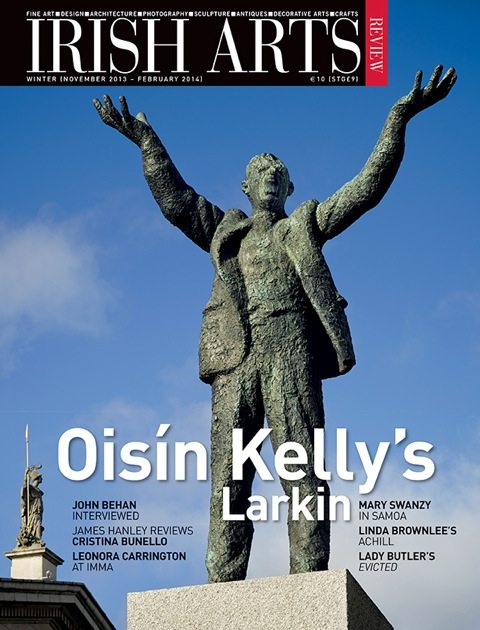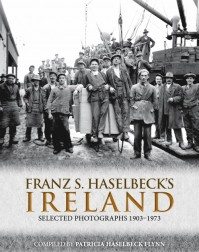
 PATRICIA HASELBECK FLYNN
PATRICIA HASELBECK FLYNN
Collins Press, 2013
pp 160 fully illustrated h/b
€19.99 ISBN: 978-184889-184-5
David H Davison
The significance of photographic negative collections was little recognized during the 20th century, resulting in the loss of irreplaceable records of life in Ireland. Many photographic records of people and commercial life have been consigned to landfill or to the glazing of glasshouses. A similar fate has befallen much creative work by amateur photographers following house clearance. Fortunately attitudes are changing and selections from surviving collections are now appearing in book form and online from county libraries.
The selection featured in Franz S Haselbeck’s Ireland comes from the surviving negatives of a dedicated professional photographer, meticulously researched by his granddaughter who has taken appropriate steps to preserve the photographs and related documentation, thus preserving a valuable aspect of Limerick’s heritage. Having been indentured to a Dublin photographic firm in 1903 Haselbeck would have been thoroughly trained in professional photographic techniques from retouching to lighting.
His career covers the most eventful years of Ireland’s evolution and his work chronicles the era, both political and commercial, up to 1960. Most images relate to Limerick and adjacent counties and will have special appeal for the people of the region.
Haselbeck’s groups are skilfully arranged and show progression from the RIC to the Volunteers and the Gardai. Most of the people featured in the book are identified, a real tour de force. In combination with the portraits gathered here, the book represents a valuable social document. His pictures of the construction of Rank’s mill and the Shannon scheme indicate special affinity and hint at his real photographic interest and capabilities. Artistic inventiveness is not particularly evident in the other genres featured.
Monochrome reproduction is challenging, demanding rich tonality from deep black to subtle highlights. This standard is not consistent in the plates, perhaps explained by the author’s statement ‘the illustrations …are, in the main, reproduced from un-enhanced glass-plate negatives‚’. This is a questionable approach as every skilled photographer has enhanced his images from the earliest times, commonly known as ‘dodging and burning‚’. The lack of this enhancement results in bleached out faces and impoverished tonality.
Nonetheless this valuable work should grace every bookshelf in Limerick and fascinate many elsewhere.
David H Davison is a fine arts photographer.



